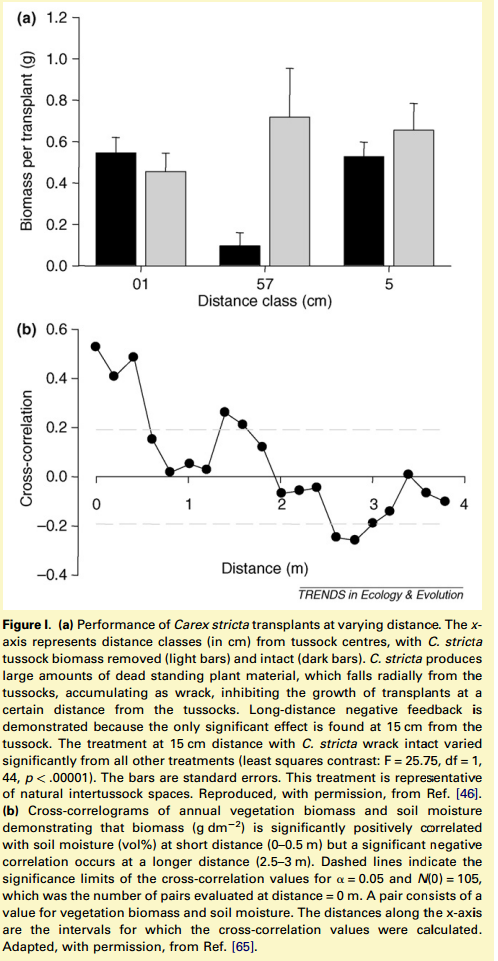Regular pattern formation in real ecosystems
http://doi.org/10.1016/j.tree.2007.10.013
This paper provides a review of recent studies that report ecosystem level pattern formation demonstrating scale-dependent feedback between organisms and their environment. Review contents explore the principal of scale-dependent feedback, real ecosystem studies, prerequisites of long-distance negative feedback, ideas for measuring mechanisms, and implications for future research.
Scale Dependent Feedback:
Scale-dependent feedback can be considered the interactions between organisms and their environment that either facilitate or suppress ongoing processes. This can be measured in either the presence/absence of feedback or a determined magnitude. Typically, scale-dependent feedback manifests in positive feedback at local scales and negative feedback over longer distances, when inhibitors spread at a faster rate than facilitators. Pattern formation via scale-dependent feedback was first proposed by Alan Turing by way of his activator-inhibitor principle. Scale-dependent feedback is believed to manifest in ecosystems by short-range facilitation through local modification and long-range inhibition through competition.
Real Ecosystems:
The ecosystems reviewed in this paper are arid, wetland, savanna, mussel beds, coral reefs, ribbon forests, intertidal mudflats, and marsh tussocks. Each ecosystem section provides a brief description of the types of patterns observed, and the known mechanisms that can explain observed patterns.
Long-distance Negative Feedback:
For ecosystems, all observed studies on regular pattern formation require that organisms be able to modify their current environment and results in a negative feedback at a certain distance. The strength of the feedback can be dependent on the density of organisms. Researchers emphasize the need to look beyond the local scale as a way to verify the magnitude of density dependent effects.
Studying Feedbacks at Longer Distances:
Recommendations for studying feedbacks in ecosystems involve removing facilitating organisms from the site and observing the performances of transplants with and without removal. A second proposed method is to look for significant cross-correlation between the density of organisms and the resource or stress factor at long distances.

